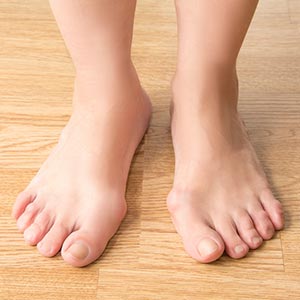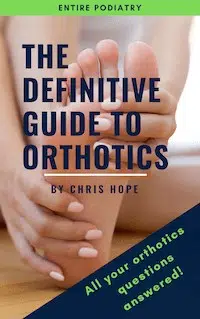What is a bunion ?
A
Bunions are a common cause of pain in the big toe joint. Other symptoms of bunions include skin irritation, redness, and the formation of blisters around the site of the
In addition to orthotics, well-fitting footwear is essential to reduce irritation and your podiatrist will be able to provide advice on footwear to meet your needs. Entire Podiatry stock a range of footwear that is suitable for people who have bunions, such as shoes with stretch to accommodate the area of the
Ice may be used for temporary pain relief and to relieve symptoms of bursitis. Foot strengthening exercises may also be prescribed as part of your

There are three stages of
- Primary stage: A primary stage
bunion presents as a slight bump. This stage ofbunion presentation is usually seen in adolescents and young adults. - Secondary stage: As the foot continues to roll inward, repeated force is placed on the big toe joint. In the secondary stage, the
bunion will be more pronounced and there is angling of the big toe in toward the second toe. - Tertiary stage: Once a
bunion has reached the tertiary stage of development, there is usually an overlapping of the big toe above or below the second toe. At this stage bunions can be very painful and it is very difficult to find shoes that comfortably accommodate thebunion deformity.
Bunionette
A bunionette is a
What causes bunions?
Bunions are often thought to be due to poor-fitting footwear, however bunions have been found on people who have never worn footwear. It is generally conceded that inappropriate footwear can exacerbate bunions, but largely biomechanical factors are considered to be the main cause of bunions. For example, over-pronation or rolling in of the foot (flat feet) and having a short first metatarsal can increase the chance of a
Other possible causes of bunions include genetics, leg length discrepancy, and reduced strength in foot ligaments (such as that which is caused by hormone release in pregnant women).
How are bunions treated?
Bunions do not generally get better if left untreated. The condition usually only gets worse; bunions get bigger and big toe joint arthritis can develop.
The main goal of treatment for bunions is to reduce over-pronation, removing excessive force from the site of the
In addition to orthotics, well-fitting footwear is essential to reduce irritation and your podiatrist will be able to provide advice on footwear to meet your needs. Entire Podiatry stock a range of footwear that is suitable for people who have bunions, such as shoes with stretch to accommodate the area of the
Ice may be used for temporary pain relief and to relieve symptoms of bursitis. Foot strengthening exercises may also be prescribed as part of your





